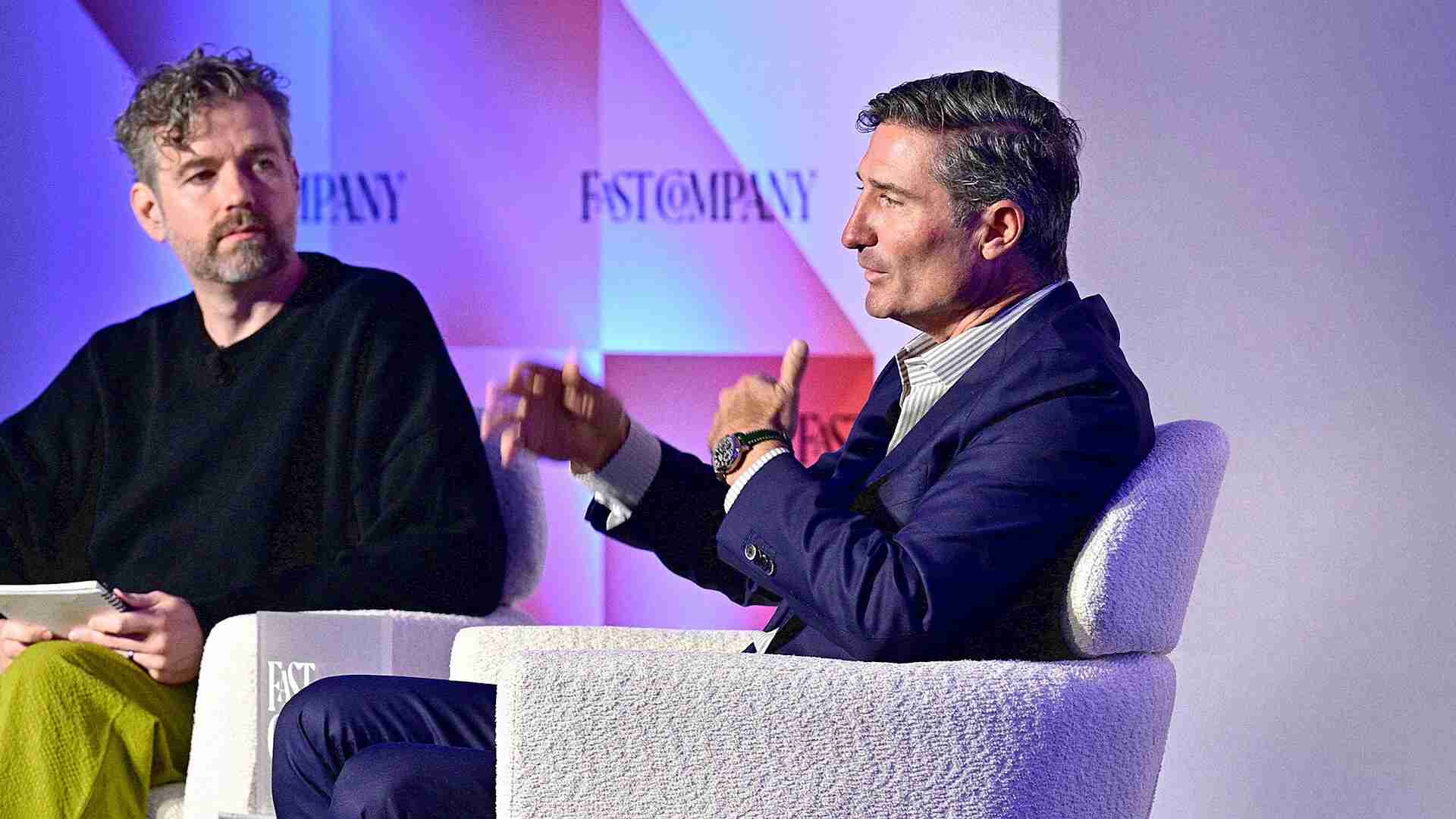- | 10:00 am
Here are the 4 ways banking will evolve in the next decade
Expect to see a new crop of fintech firms and a return of (a more regulated) cryptocurrency market.

With the rise of fintech companies and banking-as-a-service platforms, growing cellular capabilities, and evolving consumer sentiments and needs, we find ourselves on the precipice of a banking revolution.
According to findings from Zion Market Research, as of August 2022, the global fintech-as-a-service platform market size is predicted to grow around $949 billion by 2028, with a compound annual growth rate (CAGR) of roughly 17%. What we consider banking today will take on new forms and regulatory standards, evolving into the fabric of our everyday digital experiences. In November 2022, a report released by the Treasury Department outlines in detail how large and small companies are offering financial services at a real point of need for the consumer, creating a new playing field for smaller companies, startups, and regional banks to expand their product offerings and compete with larger banks and institutions. Collectively, these trends will significantly broaden the banking playing field for all.
Here are the top four trends to expect in the next decade in banking as the industry transforms for the better.
INCREASED REGULATION WILL IMPROVE THE EMBEDDED FINANCE ECOSYSTEM
Over the last few years, embedded finance has become a part of our everyday use, with financial services and applications available when we need them. Consumers can now use “buy now, pay later” services for online purchases, make one-click payments on Uber, Amazon, or Walmart, and add built-in insurance offerings to their travel and accommodation bookings. An October 2022 piece coauthored by several McKinsey partners revealed that embedded finance reached $20 billion in revenue in the U.S. alone in 2021. Embedded finance has transformed the point-of-sale process, improving the customer experience through lending, insurance, and other offerings while generating more business for sellers. According to a September 2022 report from Bain & Company, enablers and platforms of embedded point-of-sale lending should be able to increase their profits by 75% by 2026.
The infrastructure of embedded finance is still in its infancy, and the market has moved quickly without much oversight or quality control. As the industry matures, regulators will become more involved, driving more specialized, productive banking offerings. Ultimately, this is good for consumers as it will create a higher-quality banking product.
THE GEN Z TRANSFER OF WEALTH WILL SPAWN A NEW CROP OF FINTECH COMPANIES
While Generation Z may seem young, their money habits and behaviors will inform the next 10 years in banking as this transfer of wealth quietly occurs. The group will see their income surpass that of millennials by 2031, increasing fivefold by 2030 to $33 trillion, more than a quarter of global income. Inflation over the last few decades will further account for a seemingly wealthy generation of young people.
With this upcoming wealth transfer, we will see groups within Gen Z continue to invest in more traditional ways, such as real estate or IRAs, with varying risk appetites informed by their perception of culture. This generation was born in the internet age, lives in the digital world, and seeks services that align with their values and views on diversity, equity, inclusion, the environment, social justice, and governance issues. This is corroborated by a November 2022 survey released by Stanford Graduate School of Business, the Rock Center for Corporate Governance, and the Hoover Institution. The survey, which polled 2,470 investors, revealed sharp differences along generational lines, with younger shareholders saying they are far more eager to have fund managers pursue ESG objectives.
We also will see some take a more conservative mindset after seeing their parents go through a great recession, living through a pandemic, and surviving a volatile political landscape. Those scars will certainly inform investment decisions.
But my macro prediction is that we will see this generation invest more aggressively. And as consumer demands from Gen Z increase, personalization is the way to meet this demand. Banks are unlikely to step up to that challenge in the way they do for high net-worth individuals. In anticipation of that need, fintechs and BaaS platforms will step up to the plate and continue to innovate. Passive investing in high-yield products will become more common, launching a market of democratized, easy-to-use hedge funds. A new category of technology-led, fintech companies that cater exclusively to young wealth and focus on concierge-style wealth management will emerge. And the banking industry will continue to become more democratized as it rolls out the red carpet for young people.
THE AREA OF INFLUENCE WILL GROW FOR BANKING
The pandemic accelerated the adoption of mobile banking. A lesser-known fact is that it brought more people into the banking system. According to the FDIC’s 2021 National Survey of Unbanked and Underbanked Households, only 3% of U.S. households are now unbanked—down 23% from 2019 and 55% from 2011. (Note: the FDIC defines unbanked as not having a bank or credit union checking account.)
Over the next decade, the area of influence will grow for banking, but with the U.S. potentially on the brink of a recession, the wealth gap of unbanked and underbanked groups could swell again. Primarily driven by the rise of embedded finance, more people will be able and willing to participate in our banking system than ever before. They will have access to better checking and saving accounts, new investment opportunities, credit-building credit cards, and more open banking products. Despite these efforts, the wealth gap, fundamental distrust, and systemic bias remain in our banking systems. Still, with technologies and approaches like those outlined above, we have a much better chance of expanding the playing field and emerging with a more universally accessible approach to money management and wealth creation.
CRYPTOCURRENCY WILL MAKE A CALCULATED, REGULATED RETURN
It’s no secret that cryptocurrency has had a rough year, but don’t count it out just yet. The fundamentals of decentralized financial currencies still represent one of the futures of finance. Over the coming years, we will see it play out in a few ways: through securities and regulation, the emergence of the first consumer enterprise product, and a surge for more use cases outside of finance.
Blockchain provides a high-risk, high-reward opportunity to buy stock in decentralized technology. However, while blockchain seems like a currency, it is closer to a stock in a commodity. As we evaluate cryptocurrency’s feasibility generally, we must begin to look more deeply and differently at its overall risk. The Securities & Exchange Commission (SEC) will soon regulate utility and private company token investment, which is an equity certificate issued on the blockchain usually tied to a company’s shares. This oversight will be welcome and bring ample investment-risk disclosure, but it will mean they will no longer be accessible to everyone.
Stablecoins—a digital representation of any currency from any country—is the first successful example of blockchain in banking. I expect Stablecoins to improve banking, bringing more control and less volatility to the customer and for the masses to eventually adopt the digital coin.
Lastly, because of the increased scrutiny around securities trading and financial services in cryptocurrency, more and more entrepreneurs will want to build gaming, social networks, and other nonbanking products in Web3. This will accelerate the adoption of blockchain outside of finance because it is becoming embedded, bringing it back into the zeitgeist.








































